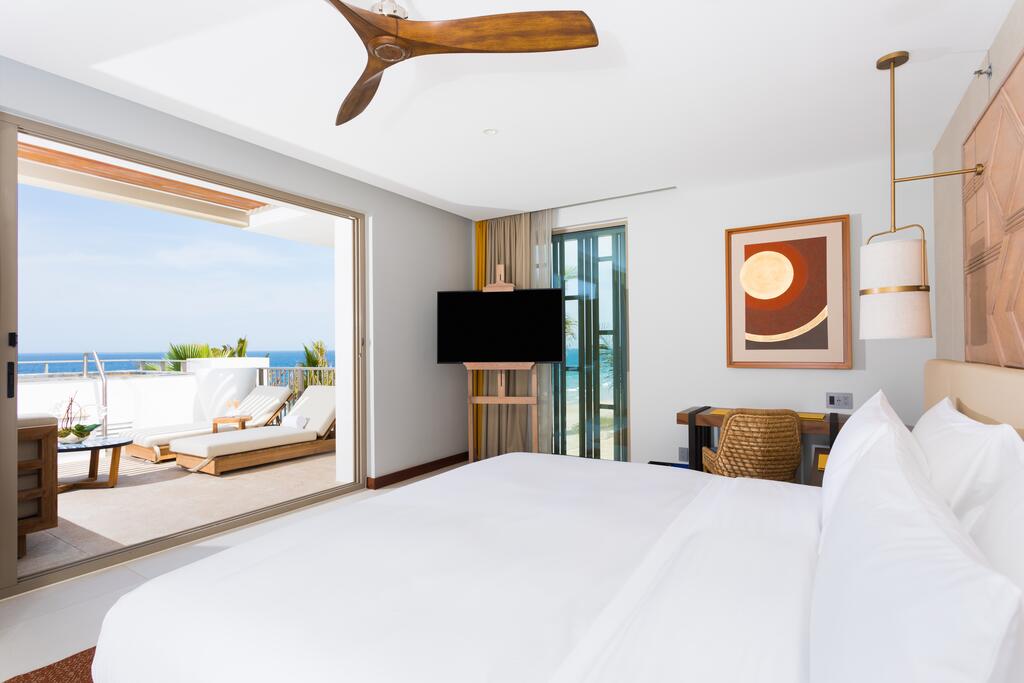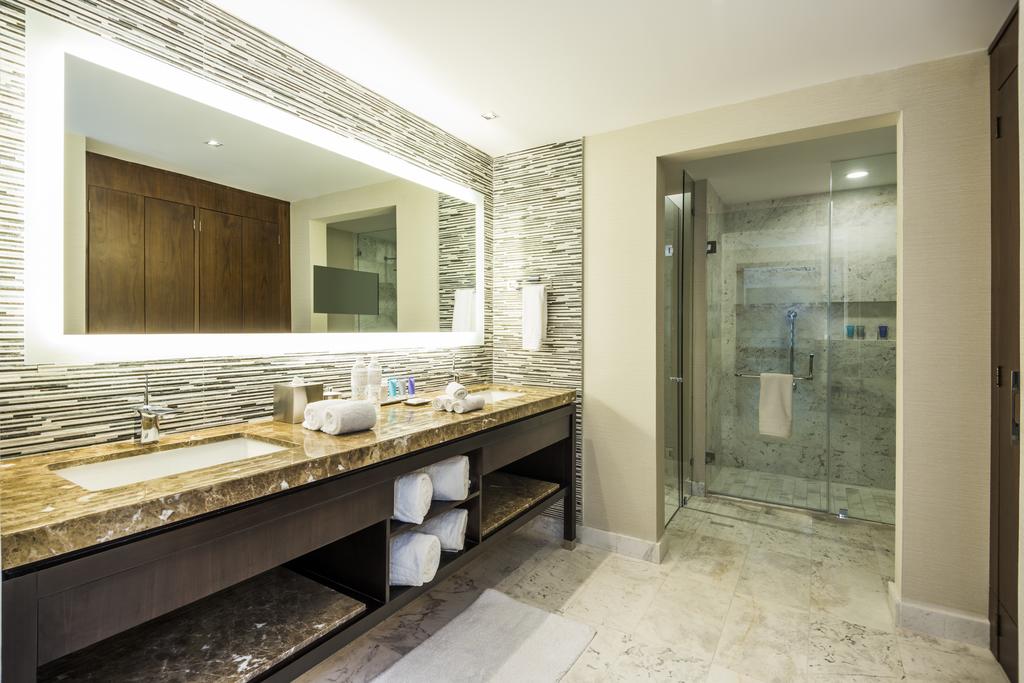Welcome to Harman, your premier destination for luxurious furniture solutions specifically tailored to the needs of the hospitality industry. As a hotel furniture supplier, we pride ourselves on our commitment to excellence and innovation in crafting furniture. Our customized furniture enhances the aesthetic appeal of spaces and maximizes functionality and comfort.
As furniture customization experts, we recognize every detail’s significance in creating unforgettable guest experiences. In this article, we will discuss the difference between fixed and moveable hotel furniture. While both serve essential roles in shaping the ambiance and functionality of hospitality establishments, each offers unique benefits and considerations.
Besides discussing the differences, we will also cover important topics, including design considerations, maintenance, and durability of custom furniture, etc. Without any further delay, let’s begin with our topic:

Difference Between Fixed Hotel Furniture and Moveable Furniture:
Fixed hotel furniture is the fixtures permanently installed within a hotel space. Fixed hotel furniture includes built-in wardrobes, bed frames, or bathroom vanities. These pieces are typically immobile and integrated into the structure of the room.
On the contrary, movable furniture includes chairs, tables, and bedside cabinets that can be easily repositioned or relocated within the room. A detailed difference between the two is listed hereunder:
Fixed Hotel Furniture:
Fixed hotel furniture refers to permanent fixtures that are built into the structure of a hotel room or space. These pieces are typically immobile and cannot be easily moved or repositioned. Fixed furniture is designed to seamlessly integrate with the overall design and architecture of the hotel, providing a sense of cohesion and uniformity to the space. These fixtures are often custom-made to fit specific dimensions and requirements of the room.
Examples of Fixed Furniture Commonly Found in Hotels:
1. Built-in Shelves:
These shelves are incorporated into the hotel room’s walls, providing storage space for guests’ belongings.
2. Bed Frames:
Fixed bed frames are permanently attached to the floor or walls, providing support for the mattress and ensuring stability.
3. Bathroom Vanities:
Built-in bathroom vanities include sinks, countertops, and storage cabinets integrated into the bathroom design, offering functionality and aesthetics.
Advantages of Fixed Furniture for Hoteliers and Guests:
1. Durability:
Fixed furniture offers various benefits. Durability is the top benefit. It is typically made from high-quality materials and built to last, ensuring long-term durability. It requires minimal maintenance.
2. Space Optimization:
Since fixed furniture is designed according to the client’s requirement to fit the room’s dimensions, it helps maximize the use of available space, allowing for efficient utilization of the hotel room layout.
3. Enhanced Aesthetics:
Fixed furniture manufactured by the hotel furniture factory contributes to the overall design and aesthetic of the hotel room. Thus, it helps create a cohesive and visually appealing environment for guests.
4. Improved Safety:
Fixed furniture also improves safety by anchoring strongly to the floor or walls, reducing the risk of accidents or injuries caused by furniture tipping over or shifting.

Challenges or Limitations of Fixed Furniture:
Where fixed furniture entertains with benefits, there are also some limitations. Challenges faced by fixed furniture are listed hereunder:
1. Lack of Flexibility:
The stability of fixed furniture limits the ability to reconfigure or rearrange the room’s layout according to changing preferences.
2. Cost and Installation:
Custom-made fixed furniture designed by commercial hotel furniture suppliers can be expensive to manufacture and install, requiring skilled labor and specialized equipment.
3. Limited Customization:
Once installed, fixed furniture may not be easily modified. Thus, accommodating individual guest preferences or changing design trends is impossible.
4. Potential for Obsolescence:
Fixed furniture may become outdated over time, requiring costly renovations or replacements to keep up with evolving guest expectations and industry standards.
Movable Hotel Furniture:
As the name suggests, Movable hotel furniture is furniture in a hotel room or public area designed to be easily repositioned or rearranged. These include chairs, tables, luggage racks, and sometimes beds or partitions.
Movable hotel furniture is characterized by its ease of mobility. These pieces are typically lightweight, compact, and designed with features like wheels, folding mechanisms, or modular designs that facilitate easy relocation or reconfiguration.
Examples of Movable Furniture Commonly Used in Hotels:
1. Chairs:
Lightweight chairs with stackable or foldable designs are commonly used in hotel rooms and banquet halls.
2. Tables:
Folding tables or tables with wheels allows hotel staff to quickly set up or rearrange seating arrangements in conference rooms or event spaces.
3. Luggage Racks:
Luggage racks with wheels or collapsible designs offer guests the convenience of moving them around as needed.
Advantages for Hoteliers and Guests:
1. Flexibility:
Movable furniture designed and manufactured by professional luxury hotel furniture suppliers allows hoteliers to quickly adapt spaces for different purposes. They can easily rearrange seating layouts for events or meetings, optimizing available space.
2. Customization:
Guests can rearrange furniture in their rooms to suit their preferences or needs, enhancing their comfort and convenience during their stay.
3. Maintenance:
Movable furniture can be cleaned easily, and it’s easier to access all room areas when furniture can be easily moved.
Challenges or Limitations:
As with fixed furniture, there are some drawbacks associated with movable furniture. Are you interested? Continue reading.
1. Durability:
Some movable furniture may lack durability for mobility. This leads to potential wear and tear. Also, the lifespan of fixed furniture is reduced.
2. Safety Concerns:
Furniture with moving parts, such as wheels or folding mechanisms, may pose safety risks if not properly maintained or used incorrectly.
3. Aesthetic Considerations:
While movable furniture offers flexibility, it may only sometimes align with the overall design aesthetic of the hotel or room if chosen carefully.

Design Consideration:
Impact of Furniture Choice on Hotel Aesthetics and Functionality:
The selection of furniture profoundly influences a hotel’s aesthetic appeal and functionality. The design ethos and style of the furniture contribute to the overall ambiance and atmosphere experienced by guests. Sleek and modern furniture manufactured by boutique hotel furniture suppliers may evoke a sense of contemporary luxury. Likewise, classic and timeless pieces may convey a more traditional and elegant ambiance.
Furthermore, the functionality of furniture is essential in enhancing the guest experience. Ergonomically designed chairs and desks promote comfort and productivity for business travelers. At the same time, cozy armchairs create inviting spaces for relaxation and socialization.
By carefully considering the aesthetics and functionality of furniture, hoteliers can create memorable experiences that resonate with guests and elevate their perception of the establishment.
Flexibility in Room Layout and Design with Movable Furniture:
Movable furniture offers unparalleled flexibility in room layout and design, allowing hoteliers to adapt spaces to meet varying guest needs and preferences. Unlike fixed furniture, which is permanently anchored to the room’s structure, movable furniture can be easily repositioned or rearranged to accommodate different configurations.
This flexibility enables hotels to maximize the utility of their spaces, seamlessly transitioning between different functions such as dining, working, or lounging. Moreover, movable furniture facilitates efficient housekeeping and maintenance procedures by providing clear access to cleaning areas and allowing for effortless furniture relocation during room refreshes.
By incorporating movable furniture into their design schemes, hoteliers can create dynamic, versatile environments that can evolve with changing guest demands and industry trends.
Integration of Fixed and Movable Furniture in Hotel Design:
An effective hotel design often involves a harmonious integration of both fixed and movable furniture elements. Hospitality furniture suppliers entertain hoteliers with fixed furniture that provides stability and durability. It also provides a cohesive aesthetic foundation for the space, anchoring key functional areas such as sleeping, bathing, and storage.
Meanwhile, movable furniture introduces versatility and adaptability, allowing for personalized guest experiences and customizable room layouts.
By strategically combining fixed and movable furniture, hotel designers can balance permanence and flexibility, creating visually appealing and functionally efficient spaces.
Maintenance and Durability:
Maintaining customized furniture is essential for preserving its functionality, appearance, and longevity. Fixed furniture typically requires less maintenance compared to movable furniture due to its immobile nature and integrated design.
Built-in fixtures such as shelves, bed frames, and bathroom vanities are less prone to wear and tear caused by frequent movement or usage. However, fixed furniture may still require periodic cleaning and inspection to ensure it remains in optimal condition.
On the other hand, movable furniture necessitates more frequent maintenance due to its mobility and exposure to guest use. Chairs, tables, and other portable furnishings are susceptible to spills, scratches, and other forms of damage that may occur during daily operations. Regular cleaning, repair, and replacement of movable furniture components are essential to uphold cleanliness standards and guest satisfaction.

Longevity and Durability Considerations for Both Types of Furniture:
Durability is a critical factor in hotel furniture selection, as it directly impacts the lifespan and overall cost of ownership. Fixed furniture tends to be more durable than movable furniture due to its sturdy construction and permanent installation. Built-in fixtures are typically crafted from high-quality materials such as solid wood, laminate, or composite materials, ensuring long-term durability and resistance to wear and tear.
In contrast, the durability of movable furniture depends largely on the materials used in its construction and the quality of craftsmanship. While some movable furniture pieces may be constructed from durable materials such as hardwood or metal, others may be made from less resilient materials prone to damage and deterioration over time.
Despite these differences, hotel furniture manufacturers’ fixed and movable furniture can have long lifespans with proper care and maintenance. Routine inspections, repairs, and refinishing can extend the life of hotel furniture, minimizing the need for premature replacements and reducing overall lifecycle costs.
Investing in high-quality furniture products from reputable manufacturers can enhance durability and ensure lasting performance in the demanding hospitality environment.


